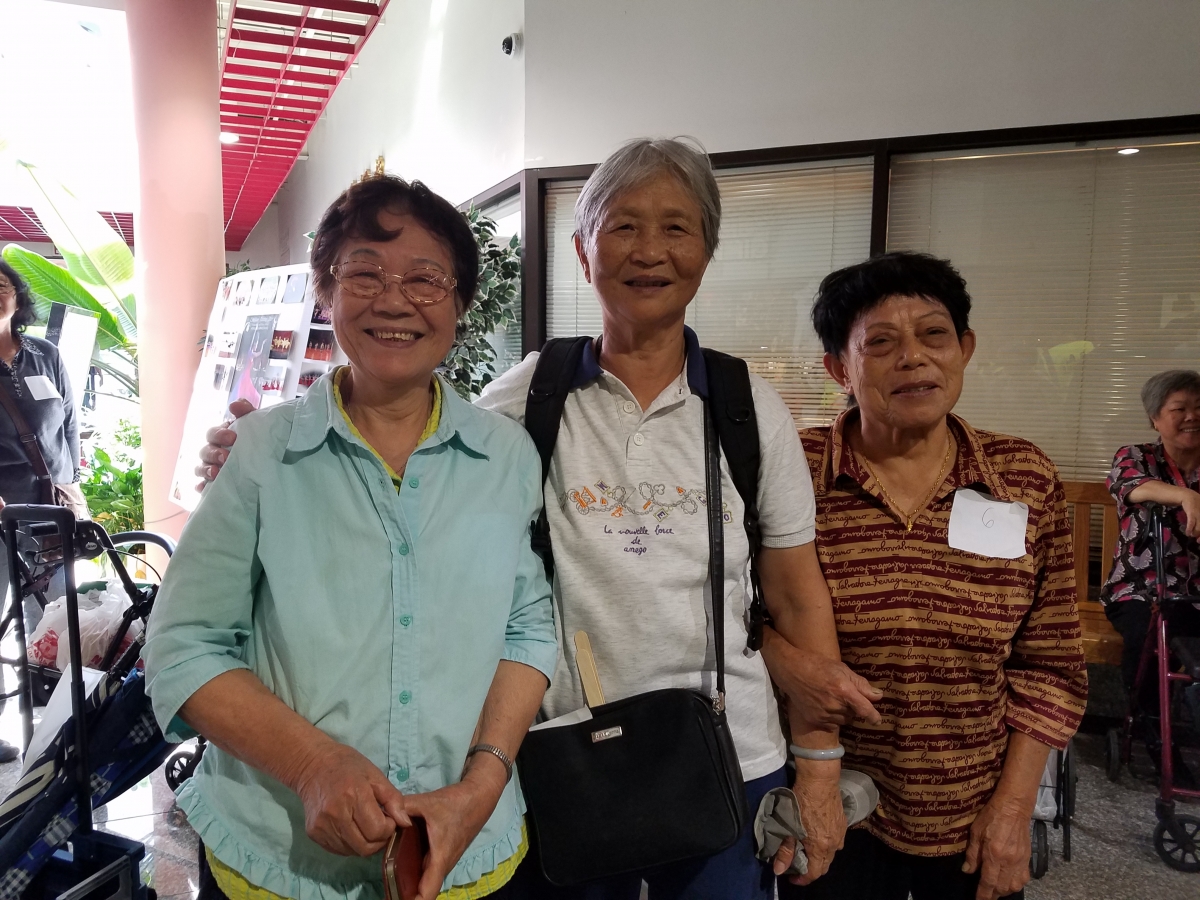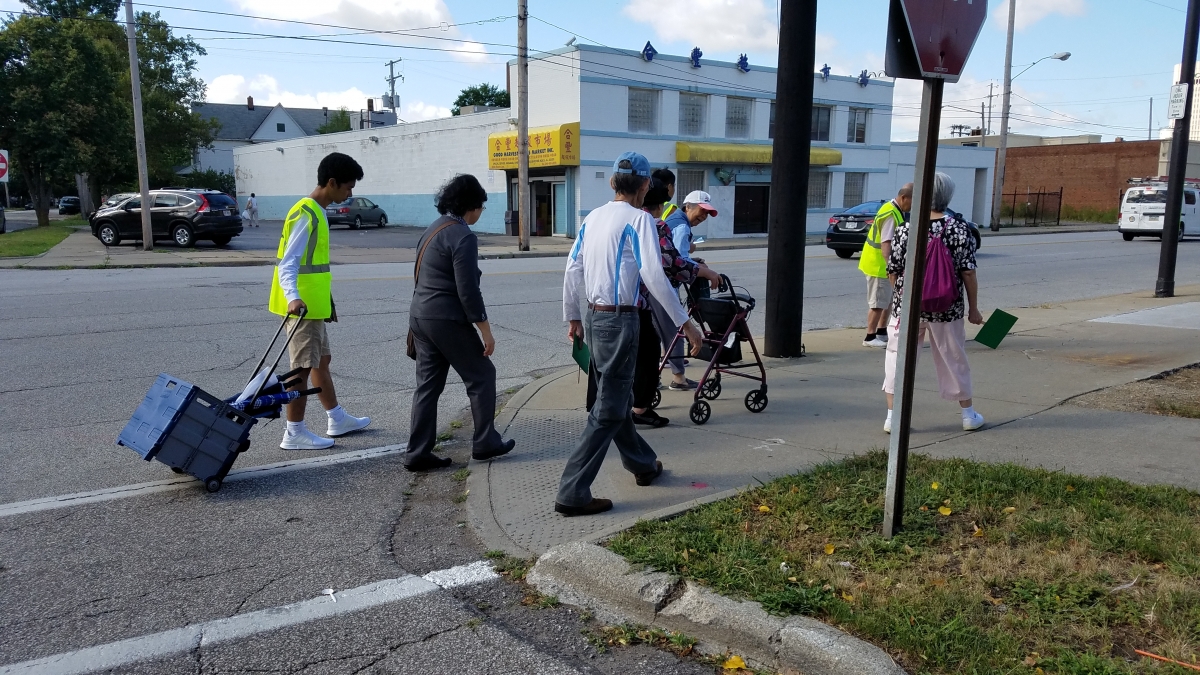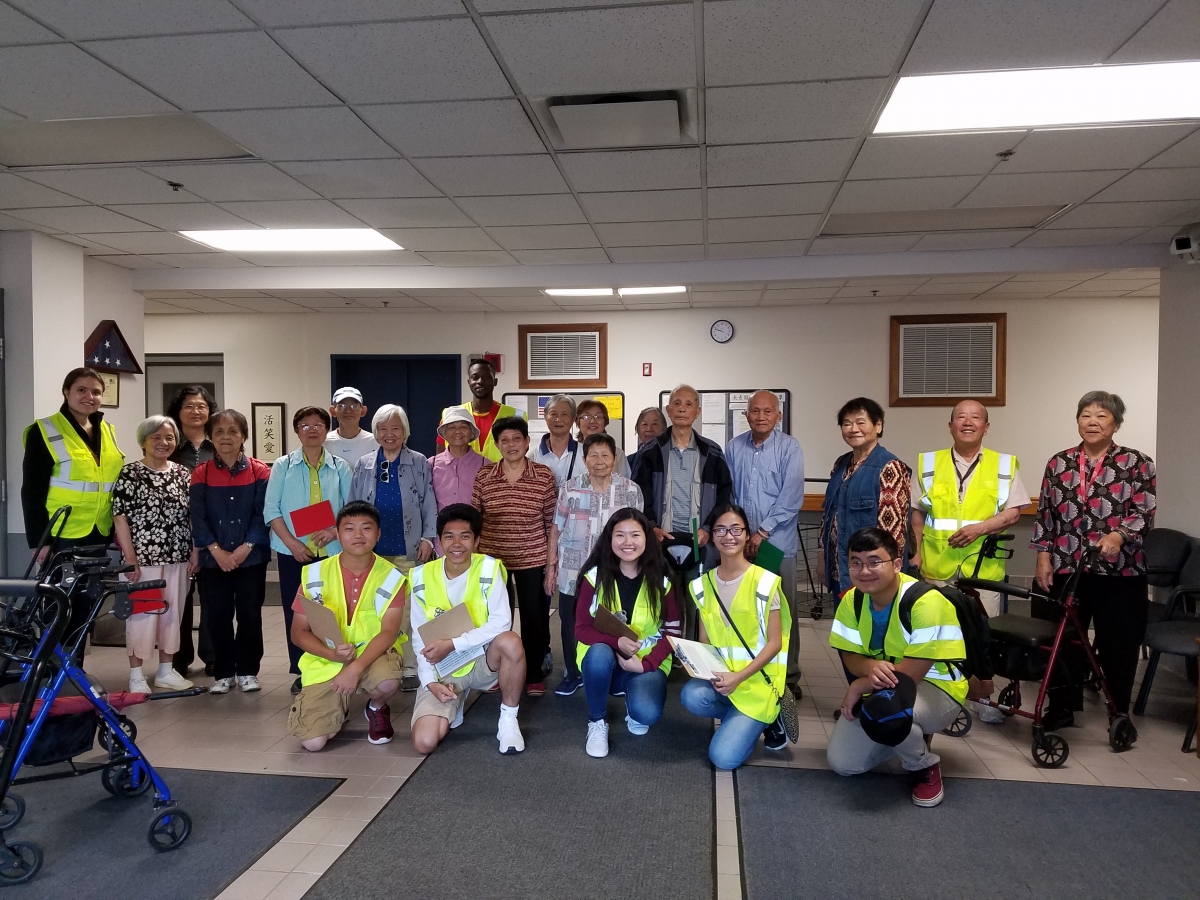In winter 2017, our team got a question: “Have you ever looked at how people can walk to and from grocery stores from senior centers? Maybe Safe Routes to Grocery Stores?” We were thrilled. We had been working for the past year to refine a concept called Safe Routes to Healthy Food, which works to overcome the barriers to walking, biking, and taking public transportation to places where people get healthy foods. This was a chance to dive in to see how the challenges and solutions we’d been exploring played out in a real neighborhood. Asian Services in Action, Inc. (ASIA) in Northeast Ohio wanted to improve walkability for senior residents at the Evergreen Apartments, a large senior housing complex, to grocery stores in the AsiaTown neighborhood of Cleveland, Ohio.

ASIA works to improve quality of life for the Asian Americans and Pacific Islanders in Northeast Ohio. One step toward that goal was to support senior residents, many of whom do not drive, at the Evergreen Apartments to safely get to their preferred grocery stores in the AsiaTown Plaza. Cathy Vue, Program Manager at ASIA, shared their rationale for working on this project, “When the main grocery store in AsiaTown (Dave’s, a local grocery chain) decided to close and move - this was a call to action for ASIA to assess how the residents will access food in a safe manner.” Improving walkable access to culturally relevant grocery stores provides seniors at the Evergreen Apartments an opportunity to be physically active and retain their cultural heritage, purchasing and cooking familiar foods, while aging in place.

In conversation with ASIA, we discussed how next steps would be most effective if they were informed by the senior residents themselves. Cathy explained, “Across the US, the aging population is a vulnerable community who goes unheard when it comes to making improvements that are necessary for communities to thrive.” Together, we determined that a walk audit would be an appropriate way to gather insight from the seniors. Our team worked with ASIA to tailor a walk audit tool to meet the needs of Evergreen Apartment’s residents, 80% of whom speak limited English. This tool needed to take into account that the walk audit would be conducted by elderly adults, some of whom have mobility challenges, and that the residents speak three different languages. The tool needed to assess not only the walkability of the route, but also the features around the store that supported or hindered these residents from walking to and from the grocery store. Some of the steps we took to tailor the walk audit tool for this audience included:
- Swapping text for visuals, including smiley and frowny faces for residents to circle to report back on how particular aspects of the route made them feel about walking
- Adding questions about the design of the grocery store parking lot and plaza
- Developing a plan for participants to actually grocery shop during the walk audit so that barriers encountered on the walk back to the apartment would be as realistic as possible
We conducted a “train the trainer” workshop, building the capacity of ASIA’s staff and volunteers to lead walk audit workshops with the senior residents. ASIA offered two sessions of the walk audit workshop with the residents of Evergreen Apartments – one in Korean and one for both Cantonese and Mandarin speakers. This intergenerational project trained youth volunteers to be the primary collectors of data, and used the tailored walk audit forms to gather information from the senior participants as they walked. Due to the high cost of translating worksheet materials into three languages, we devised a workaround to each participant filling out their own walk audit worksheet. The senior participants carried red and green flags to raise when they saw something that either made it easy and safe for them to walk (green) or when they identified barriers to walking safely (red). ASIA’s staff and volunteers then wrote those insights down on the walk audit worksheets.

The two groups identified a number of challenges, including:
- The need for park benches along the route. Without a place to take a break, the walk between the grocery store and Evergreen Apartments was exhausting for some seniors.
- Lack of a crosswalk at a major intersection
- The need for a curb ramp and a corner to corner crossing on main road along the route
- Properties along the route that are poorly maintained, so residents prefer to cross the street rather than walk past those unsightly properties
ASIA shared the walk audit results with Age Friendly Cleveland, a program in the City of Cleveland that works to enable “people of all ages to actively participate in community activities.” Age Friendly Cleveland is adding the recommended improvements to its multi-year workplan. ASIA is working with the community development corporation of AsiaTown, known as St. Clair Superior Development Corporation, to conduct a walk audit of the remaining bordering streets of the AsiaTown neighborhood, St. Clair Superior CDC will aggregate the recommended improvements and begin working with the city to make these improvements.

Our team continues to work to answer the question initially posed by ASIA. We know improving the route is about so much more than transportation. As Cathy shared, in AsiaTown, “Safe routes to grocery stores is important because the type of food residents have access to not only dictates their health, but it is much deeper. Access to food dictates social gatherings, cultural retention, and overall well-being and happiness. Without safe access to grocery stores, this community would be at a disadvantage to live their daily lives and thrive.”
Since 2016, the Safe Routes Partnership has been working to refine the concept of Safe Routes to Healthy Food, which works to overcome the barriers to safe, convenient healthy food access for people without cars. Through the Voices for Healthy Kids initiative, we have brought together people working on different aspects of this problem into a Safe Routes to Healthy Food task. In partnership with The Food Trust and this task force, we’ve developed recommendations for various sectors to improve walkable, bikeable, transit accessible healthy food access. To learn more about Safe Routes to Healthy Food and explore the recommendations and resources we’ve created for active transportation advocates, healthy communities champions, and healthy food access advocates, visit our Safe Routes to Healthy Food resource page. To learn more or if you have questions or ideas specific to your community, contact Marisa Jones, Healthy Communities Senior Manager at marisa@saferoutespartnership.org.
